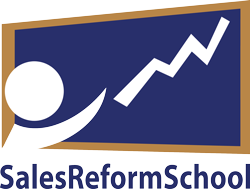From the Sales Training Practices Group on LinkedIn:
Matthew Kearns, a Sales Learning Consultant posted:
My company sells outsourced workforce management technology and service. I’m currently a sales trainer for their Major Accounts division (selling to companies with 50-999 employees). Over the past several years in the field and now preaching as trainer, its been mostly Value Based selling…meaning strategic, client centric to C-Level, finding out how we can help them to impact top line revenue and reduce expenses to stretch out their bottom line profit. This has been adopted very well assuming we’re talking to a true C-Level decision maker…price isn’t a barrier if there is opportunity to tie back our value to their TOP LINE initiatives…other factors come into play as well…The challenge is when there isn’t any other way into the account besides through a User, who in many cases can pull the trigger for change…this is were as sales professional you need to know when to call an auditable and get down to business, find out the buying criteria, strongly qualify the buyer and if it makes sense, take your seat at the table and position your solution and company accordingly…not always fun, gets more commoditized, however can be a quick turn especially if your replacing a like service. For new folks in my industry it is extremely hard to teach the latter. They want to talk strategic when their speaking with a tactical buyer…sometimes they’ll lose the sale because it could get over complicated. Any feedback on how to teach the difference would be welcomed!
I answered:
Matthew:
Your challenge is real: Yes, often opportunities start as leads from “users”. You say, sellers must “find out the buying criteria, strongly qualify the buyer and if it makes sense, take your seat at the table and position your solution and company accordingly…”
What if we take the first task out of the equation? Is there really a “buying criteria” yet when starting with a user? Many sellers (“closers”) knock themselves out of alignment with users by assuming they have arrived at a point where there is a buying criteria. You are on the right track, though, by including “qualifying the buyer”, etc. There is a real difference between qualifying the buyer and qualifying the opportunity. For us, without a qualified buyer, you cannot have a qualified opportunity. For a “user based” lead, then, what does a rep have to do to qualify the buyer (as a champion)?
How’s this?
* Does the user’s company and user herself have goals and objectives similar to those we’ve helped our clients reach in the past?
* Do we have conversational and then correspondence-driven agreement with the prospect that there are real and measurable issues and challenges that are keeping them from reaching these objectives?
* Does she agree that with the capabilities (discussed) we can offer, the prospect can overcome these challenges or issues and reach objectives?
* Are they willing to introduce us to others who with them will evaluate these capabilities, allow us to prove ourselves and buy if there’s a strong enough cost v. benefit?
This probably seems like “motherhood and apple pie”. if I can re-phrase your question: So then, how do you teach “new folks in your industry” to have conversations so they can perform the above buyer qualification process?
The answer lies in how you prepare them for their sales conversations.
To prepare them, what if leaders from product marketing/management and sales knew how to get together and create tools to arm new reps with the actual questions to ask – by title – and the conversational process to follow to drive the building of visions of a) Usage (when would they need your stuff?) b) Value (what do I get out of using your stuff?) and c) Implementation (how do i get to where I am using your stuff at geat benefit?)?
If a user develops these visions (with the help of your sales rep) and can get to others who would be involved in an evaluation, then don’t we have a qualified buyer? Wouldn’t the rep be able to answer the four qualification questions above?
Too often, new reps try to mimic existing/successful sellers. They wing-it and fail without following any sort of process. Why? The good existing reps act intuitively out of experience and often succeed, but the new reps who do not have that experience fall back bad habits and behave badly.
By documenting the conversational model and the best practices of experienced reps, can you see then how sales, marketing etc. could clone the “intuitives” and create questioning templates for new reps? In essence the leaders will be “loading the lips” of the new folks who otherwise would be relying on their ability to figure it out for themselves. Think of these templates as product usage/value/implementation training tools.
In many companies, product folks teach new reps about the products or offerings as a separate process from new hire sales training. What I am suggesting above is that product and sales need to combine the two. “What a feature is?” is of less importance to a new sales hire than “how does a customer USE it?” or “how do they get VALUE out of it? and how do I have a conversation to build those visions.”
What if new hires could practice the buyer-qualification-conversation ahead of meetings? Can you see how they could qualify better?
This strategy will better prepare new reps when getting into an account through a user.
